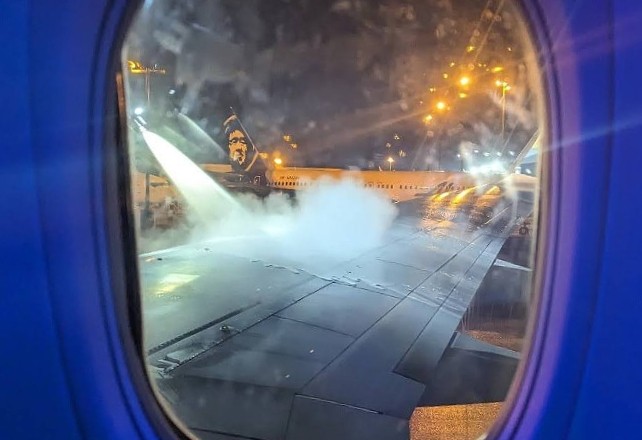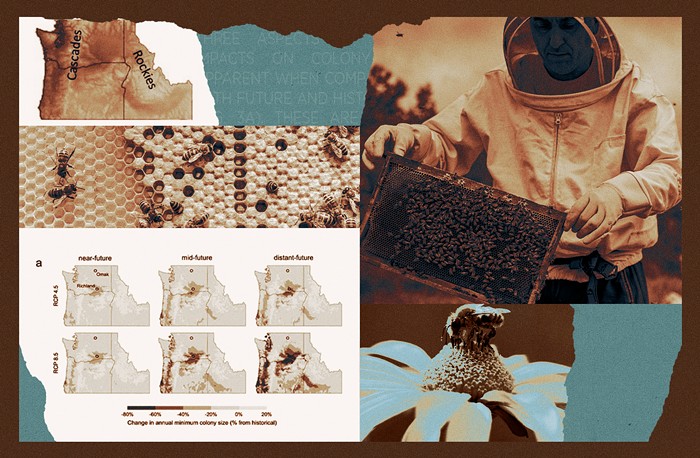Imagine returning to your childhood home only to discover that something has changed. That something is you. You’re dead.
That’s the reality facing one of the most vital species in Puget Sound’s ecosystem, the salmon. For decades, scientists have seen that when fish return to their spawning grounds, something here has been killing them in astonishing numbers: In certain locations, 60 to 80 percent of the salmon die before they’re able to reproduce.
That’s a huge problem for just about everyone.
Salmon health has a tremendous impact on the health of a wide range of other organisms, including humans. Salmon runs regulate the mineral composition of local bodies of water and soil, and the nutrients they leave behind contribute to a quarter of the nitrogen in tree foliage. The fish also help keep local insect populations in check while serving as food for dozens of species themselves. As food for humans, they account for billions of dollars in economic activity, and they’re a cornerstone of indigenous cultural traditions. Without them, everyone’s health suffers.
The good news is that after years of searching for an explanation for the premature deaths, we now know what’s killing them, and we know how to stop it.
But whether we actually will is another story.
Another One Bites the Tire Dust
Scientists have conducted surveys of migrating salmon for decades, checking for dead fish in local waterways and determining whether they died before having an opportunity to lay eggs. Since the 1990s, their findings have not been good. Despite habitat restoration and water quality improvements in the region, salmon populations are not rebounding to hoped-for levels, which is having a knock-on effect up and down the food chain.
"We’ve known for years that declining salmon levels are why forests are less productive and bird species are lower and have to fly further to get food,” said Puget Soundkeeper Alliance executive director Sean Dixon.
Around 2010, scientists at UW Tacoma zeroed in on one cause: Toxic stormwater, or water that runs off of streets during rainy weather, was poisoning the fish before they could reproduce.
According to researchers, runoff from roads is the largest driver of pre-spawn mortality, but tracking down the exact cause remained elusive at first. In part, that’s due to the region’s extremely complex network of drainage pipes. Any given street could have a hundred drains over just a few blocks, and some might drain to a treatment facility while others might dump directly into creeks. Others could have broken years ago, with nobody able to track where the polluted water was going.
"The worst case scenario is a pipe that leads from a parking lot to a stream. That’s a highway to death," Dixon said.
In recent years, scientists determined that a chemical called 6PPD-quinone, which is used in tires, causes the fish deaths. Whenever tires roll over pavement, they release tiny particles of 6PPD as dust that accumulates on the roadway. That dust then gets flushed into wastewater when it rains, and then, fatally, into waterways.
So we should get rid of this substance, right? Well, probably, but that's unlikely to happen anytime soon. "6PPD is an important ingredient for tire manufacturers," wrote the the Washington State Department of Ecology (DOE) in a recent blog post. "The chemical stops tires from breaking down quickly and helps them last much longer, which keeps passengers safe and minimizes the number of tires in landfills."
The DOE is working on finding a replacement chemical, and in 2021 identified nine possible alternatives. But research into the environmental impact of those substances is still quite young. "It will take many years to develop tires that don’t contain 6PPD and never release 6PPD-quinone into the environment," wrote the DOE.
In other words, banning 6PPD right now without an alternative in place could just shift pollution to somewhere else. "We need to conduct more research to fill these data gaps and test more to investigate the feasibility of potential safer alternatives," concluded the DOE in its 2021 analysis. In the meantime, the best option is to reduce car use and capture dirty water before it can get into waterways.
Roadside Gardens to the Rescue, Sort Of!
Fortunately, Washington (and especially Seattle) has gotten progressively smarter about managing stormwater over the last few decades.
Businesses in the city are regulated by the National Pollutant Discharge Elimination System (NPDES) permit program, which is administered by the DOE.
The NPDES permit program regulates stormwater discharges from a wide variety of land users, from industrial manufacturers to construction sites to municipal sewers, and requires them to implement measures to control discharges and runoff. Those measures vary depending on the activity on individual sites, and they can include digging trenches to limit erosion, installing permeable pavement surfaces, adding oil-water separators to drainage systems, creating pesticide management plans, and so on.
What's more, through the DOE, towns and cities must obtain permits to dump wastewater into state and federal waterways, and those permits are contingent on the municipalities having plans for keeping toxins out of runoff. As new data has emerged about 6PPD, the Department of Ecology has begun updating its requirements for every jurisdiction in the state to address the threat.
Reducing the amount of paved surface on which tire dust can collect serves as one relatively low-cost way to keep contaminants out of runoff. Building roadside gardens through which water can filter before entering a drainage system is another. Referred to as bioswales, biofiltration devices, bioretention facilities, or rain gardens, these installations can effectively capture toxins before they reach the fish. And that’s not just an optimistic hope; it’s borne out by the Department of Ecology’s own monitoring, which is managed by those local permits.
But we’ve got a long way to go in order for these facilities to have a significant impact. In Seattle, about two-thirds of our roadways drain to surface waters without any treatment at all, according to Colleen Griffith, a municipal stormwater permit implementation planner at the Washington State Department of Ecology. You’d need an astronomical number of rain gardens across the city to reduce the amount of 6PPD entering local streams.
For now, the Department of Ecology is working on identifying areas around the state where such projects would have the most impact. A study on rain garden efficacy is expected to be complete in fall of 2023.
But cleaning stormwater is just one piece of the puzzle.
“All of this is really critical while 6PPD is still in tires,” said Colleen Keltz, communications manager at Washington State Department of Ecology. “Getting it out of tires will really be the thing that we’re all going to celebrate. Because we’re years off from that, we’ve got to focus on stormwater.”
Dixon agrees. “We can’t wait for all of the tires in the world to not have this chemical in it,” he said.
Among other measures, he hopes to see new roadway construction incorporate better stormwater practices. “We know right now what will stop [wildlife] from dying is clean infrastructure, [but] every day in this region there’s a new road being built that’s not putting into practice this knowledge.”
Currently, the salmon-spawning season is just about at its annual end, with adult fish wrapping up their journeys through local waterways to reproduce. Their eggs will hatch in the spring, and juveniles will soon make their way out to sea. Those fish will return in about three years to lay eggs of their own, but their chances of surviving the journey depend heavily on us.
“When this crop of coho come home, they should come home to functional watersheds where they’re not dying from toxic tire chemicals," Dixon said.
















